stagecoach
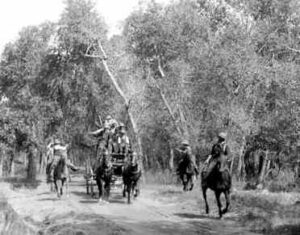 I can imagine a number of nicknames a stagecoach driver might want to have, one that no one would want to have. George Green was one of the most popular stagecoach drivers in the Sierra Mountain Range, driving for the Pioneer Stage Company between Placerville, California and Virginia City, Nevada in the 1860s. George had the nickname “Baldy” because of the sparse amount of hair he had on the top of his head. It was not the nickname “Baldy” that George would learn to hate, however. George was known for his good looks, standing about six feet tall with a large full mustache, but it was not his good looks or large mustache that earned him the nickname he hated either.
I can imagine a number of nicknames a stagecoach driver might want to have, one that no one would want to have. George Green was one of the most popular stagecoach drivers in the Sierra Mountain Range, driving for the Pioneer Stage Company between Placerville, California and Virginia City, Nevada in the 1860s. George had the nickname “Baldy” because of the sparse amount of hair he had on the top of his head. It was not the nickname “Baldy” that George would learn to hate, however. George was known for his good looks, standing about six feet tall with a large full mustache, but it was not his good looks or large mustache that earned him the nickname he hated either.
During his days as a stagecoach driver, Green drove many famous people including Ben Holladay, Horace Greeley, and Vice-President Schuyler Colfax. Nevertheless, Green was apparently not a very scary driver. On May 22, 1865, near Silver City, Nevada, three men robbed his stage of $10,000 in gold and greenbacks. I guess word must have gotten around, because more robberies followed that first one, and not only would the robbers not leave him alone, but the robberies were big news and the stories sold lots of newspapers. The Territorial Enterprise commented that Green had narrowly escaped scalping, and someone placed a sign near the robbery location saying, “Wells-Fargo Distributing Office, Baldy Green, Mgr.”
Green just couldn’t catch a break. Two years later his stage was robbed twice on successive days, and following another robbery on June 10, 1868, Virginia City’s Territorial Enterprise stated: “Baldy Green is exceedingly unlucky, as the road agents appear to have singled him out as their special man to halt and plunder, and they always come at him with shotguns.” Two more robberies occurred the same month, and you might say that the 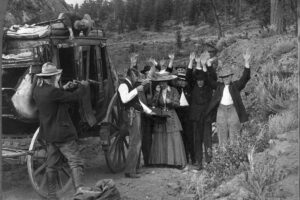 writing was on the wall. No one came right out an accused Green of being involved, but it had come to the point that they couldn’t take the risk of keeping him on anymore. Green was fired. Whether he was guilty or not, he was the driver most likely to be robbed. While he was never given that nickname, it is rather a fitting one.
writing was on the wall. No one came right out an accused Green of being involved, but it had come to the point that they couldn’t take the risk of keeping him on anymore. Green was fired. Whether he was guilty or not, he was the driver most likely to be robbed. While he was never given that nickname, it is rather a fitting one.
Green didn’t let that stop him, however. He then went to hauling freight in Pioche, Nevada. I guess either he figured out how to stop the robberies, or freight haulers were less likely to be robbed. Either way, he managed to have more success in that trade that the stagecoach career. Later on, he even served as Justice of the Peace in Humboldt County, Nevada.
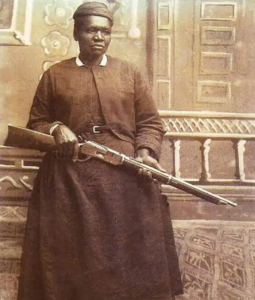 When we think of our mail carriers or even couriers, we generally think of someone who is mild mannered, and easy to get along with. Or some of us might think of someone who is lazy and slow, but we don’t often think of someone with “the temperament of a grizzly bear” and a quick hand on the draw. And if we do think of someone like that, we almost never think of it being a woman. Nevertheless, Stagecoach driver Mary Fields was one tough cookie, but it would be her devotion to her community that made her a legend across the Wild West.
When we think of our mail carriers or even couriers, we generally think of someone who is mild mannered, and easy to get along with. Or some of us might think of someone who is lazy and slow, but we don’t often think of someone with “the temperament of a grizzly bear” and a quick hand on the draw. And if we do think of someone like that, we almost never think of it being a woman. Nevertheless, Stagecoach driver Mary Fields was one tough cookie, but it would be her devotion to her community that made her a legend across the Wild West.
Sitting aloft on a stagecoach pulled by a team of horses, Fields covered over 300 miles every week to deliver mail across the West. She was not a petite woman, but rather she stood six feet tall. Fields kept a revolver and a rifle on her person at all times, and even when she wasn’t on the road, she was still a tough lady. When she was off duty, this postwoman of the Wild West was usually seen at the saloon or smoking a cigar. Fields was the first black woman to ride for the US Postal Service, and she wasn’t just tough, but she was one of a kind. She wasn’t a typical girly girl of the Wild West, but she was very special. Fields was a woman of grit.
Fields was born a slave in 1832, and according to some biographers, her mother was a house slave and her father a field slave. When Fields was in her 30s, she became a free woman following the Civil War. Once she was freed, Fields left Tennessee, and headed for Mississippi where she worked as a maid on the steamboat Robert E Lee. She later took a job as a servant in the home of Judge Edmund Dunne in Ohio. While she worked for the judge, she was introduced to his sister, Mother Amadeus, who was the Mother Superior of the Ursuline Convent in Toledo. The Mother Superior brought Fields on to work at the convent as a groundskeeper, but that job didn’t go well. When one sister asked Fields about her journey to Toledo, Fields replied that she needed “a good cigar and a drink.” I’m sure that a woman wanting a cigar and a drink in a convent probably wasn’t your average situation. One of the other nuns complained, “God help anyone who walked on the lawn after Mary had cut it.” In addition, the fiery groundskeeper with a “difficult” nature even loudly complained about her pay.
Then, in 1885, Fields left Ohio behind to travel west to Saint Peter’s Convent in the wilds of Montana where Mother Amadeus had established a children’s boarding school. The Mother Superior had fallen ill with pneumonia. Her choice of a caregiver…Fields, so she personally called for Fields to serve the nuns and nurse her back to health. Fields decided to settle in at the new convent after Mother Amadeus’ recovery. At the convent, Fields was given a position for which she was far better suited…the convent’s wagon team, hauling supplies. In addition to hauling supplies, Fields transported visitors to and from the train station. She was very serious about her job, once guarding the supplies for an entire night, single-handedly fending off a wolf pack that had spooked the horses, causing the wagon to flip.
While Fields loves working with that nuns, things were not always smooth sailing. When she wasn’t assisting the nuns and students and seeing to the chickens and vegetables on the Ursuline Convent, Mary Fields could be found in the local saloons, getting into fistfights, and smoking cigars. She also trained with a revolver and rifle, earning a reputation as a crack shot. Her tough as nails temperament, would eventually be her undoing at the Convent. Fields got into a heated confrontation with a janitor at the convent. Because Fields and the Convent’s janitor had pulled guns on each other during the argument and Brondell had her removed from her position.
Mother Amadeus remained a strong ally to Fields, and so encouraged Fields to move to nearby Cascade, Montana, where she was the only black resident. At first, the nuns helped her start a restaurant, but it failed. In 1895, Mother Mary Amadeus helped Fields to apply for another job as a mail carrier for the US Postal Service. Now in her 60s, Mary Fields secured the position when she hitched a team of six horses to a postal 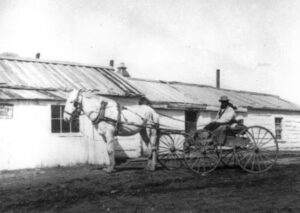 coach faster than any other applicant. She then began her daily, 17-mile trek from Cascade to Saint Peter’s. She was the second woman in US history to ride a mail route. She earned the nickname Stagecoach Mary while working as a star route carrier, protecting the mail from bandits. Fields rode her stagecoach to the train station to pick up mail and then delivered it on several routes, some of which were more than 40 miles. Fields drove over 300 miles each week to deliver the mail. When winter snow blocked the roads, an undaunted Fields threw a mail sack on her shoulder and walked over 30 miles wearing snowshoes. The people of Montana applauded Mary Fields for her commitment…and for her kindness.
coach faster than any other applicant. She then began her daily, 17-mile trek from Cascade to Saint Peter’s. She was the second woman in US history to ride a mail route. She earned the nickname Stagecoach Mary while working as a star route carrier, protecting the mail from bandits. Fields rode her stagecoach to the train station to pick up mail and then delivered it on several routes, some of which were more than 40 miles. Fields drove over 300 miles each week to deliver the mail. When winter snow blocked the roads, an undaunted Fields threw a mail sack on her shoulder and walked over 30 miles wearing snowshoes. The people of Montana applauded Mary Fields for her commitment…and for her kindness.
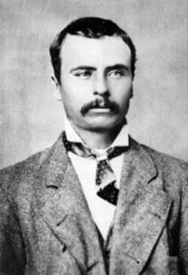 Deadwood, South Dakota maybe started out as an illegal town, but once it was established, there came a need for things like mail, supplies, and transportation, the latter of which brought the need for a stagecoach. The biggest problem with the stagecoach was the fact that the lawless element in the area thought it would be an easy target for robbery. The stagecoaches became a ride for the very brave. Soon it became apparent that the stagecoaches were going to need some protection.
Deadwood, South Dakota maybe started out as an illegal town, but once it was established, there came a need for things like mail, supplies, and transportation, the latter of which brought the need for a stagecoach. The biggest problem with the stagecoach was the fact that the lawless element in the area thought it would be an easy target for robbery. The stagecoaches became a ride for the very brave. Soon it became apparent that the stagecoaches were going to need some protection.
Daniel “Boone” May was born in Missouri in 1852. Going by the name of “Boone,” he was the son of Samuel and Nancy May, the seventh of nine children. Later, he moved with his family to Bourbon County, Kansas, where his father worked as a farmer. In 1876, “Boone” and his older brother moved to Cheyenne, Wyoming, where they worked in the freight business. During this time, the Black Hills were crawling with road agents and hostile Sioux Indians.It was a dangerous time to be working along the roadways in that area. Nevertheless, May did very well there, and he decided to buy a ranch between the Platte River and Deadwood by the end of that year.
“Boone’s” bravery and work ethic soon came to the attention of the stagecoach service, and he was soon recruited as a shotgun messenger for the Cheyenne and Black Hills Stage & Express Company. He also served as the station keeper at Robbers’ Roost in Wyoming Territory. Within just a few years, “Boone” was thought to have been in at least eight shooting incidents with outlaws. Many people said that he was the fastest gun in the Dakotas. His adventures soon became well known.
One of the first hold-ups “Boone” was involved in was in August, 1877, when a Deadwood Coach was intercepted at Robber’s Roost. On this occasion, even though “Boone” wanted to fight it out, he decided to lay down his weapons, because a woman and child were in the coach. The robbers made away with the passenger’s money, weapons and personal property. While they lost their things, I’m sure they decided that it was best to walk away with their lives. A short time later, “Boone” ran into one of the bandits, a man named Prescott Webb, in Deadwood and within no time, gunfire erupted between the two men. Though “Boone” was hit in the left wrist, he returned fire as Webb jumped on a horse to make his getaway. “Boone’s” shots hit Webb in the shoulder, and the horse several times, bringing it down. Webb was quickly arrested by Sheriff Seth Bullock and later that day, Webb’s companions who had aided in the robbery, were also arrested.
In 1878, stagecoaches known as “treasure coaches” were running regularly between Deadwood and Cheyenne. Their cargo was strong boxes filled with gold, as well as the U.S. Mail. These “treasure coach” stages often became the target of bandits, and after one of these coaches was held up on July 2, 1878, the U.S. Postal Service appointed a number of special agents to bring the outlaws to justice. “Boone” and ten other men were soon appointed as U.S. Deputy Marshals and equipped with good horses and ammunition. One of “Boone’s” first encounters with bandits as a U.S. Deputy Marshal occurred on the night of September 13, 1878. He and another messenger were trailing a Cheyenne bound coach which was approached by bandits near Old Woman’s Creek in the Wyoming Territory. “Boone” and another deputy, Zimmerman surprised the outlaws and shooting erupted. “Boone” wounded one bandit named Frank Towle and the others fled empty handed. Leaving their Towle wounded on the ground, the two messengers went after the other bandits but were unable to capture them. When they returned to the robbery site, Towle was gone.
On September 26, 1878, when “Boone” and other messengers were waiting to escort a coach at Beaver Station on the Wyoming-Dakota border, but the stage failed to show up. They went in search of the coach, and met another messenger who told them it had been robbed and a passenger killed. “Boone” quickly joined a posse to go after the outlaws, but they escaped. The following month, “Boone” learned of the hiding place of a robber named Archie McLaughlin and quickly went after him and his gang. Capturing them north of Cheyenne, the outlaws were sent under guard to Deadwood on the northbound coach. Unfortunately, the stage never make it, because on November 3, 1878, it was stopped by vigilantes who hanged Archie McLaughlin and another man named Billy Mansfield. The next month, “Boone” was in a posse that brought in a robber named Tom Price. The bandit tried to escape, and was wounded, and then was brought in. Late in 1879, “Boone” was sent to assist Special Agent William Llewellyn in the capture of a mail robber named Curley Grimes. They tracked the outlaw 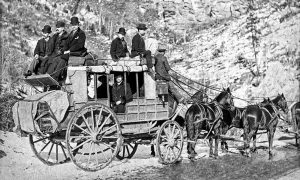 to Elk Creek, located halfway between Rapid City and Fort Meade where they arrested him. That night, as the group neared Fort Meade, Grimes attempted to escape and was shot and killed by “Boone” and Llewellyn. By this time, “Boone” had made such a reputation for himself that he became a target for many of the outlaws who repeatedly tried to assassinate him, unsuccessfully. “Boone” also worked as a messenger for the Black Hills Placer Mining Company in the summer of 1880, and was said to have killed at least one robbers during this time. A short time later, “Boone” resigned from the company and left the Black Hills. He turned up in Santiago, Chili in 1883. He shot an army officer in 1891, he fled to Brazil. He died of yellow fever in Rio de Janeiro in 1910.
to Elk Creek, located halfway between Rapid City and Fort Meade where they arrested him. That night, as the group neared Fort Meade, Grimes attempted to escape and was shot and killed by “Boone” and Llewellyn. By this time, “Boone” had made such a reputation for himself that he became a target for many of the outlaws who repeatedly tried to assassinate him, unsuccessfully. “Boone” also worked as a messenger for the Black Hills Placer Mining Company in the summer of 1880, and was said to have killed at least one robbers during this time. A short time later, “Boone” resigned from the company and left the Black Hills. He turned up in Santiago, Chili in 1883. He shot an army officer in 1891, he fled to Brazil. He died of yellow fever in Rio de Janeiro in 1910.
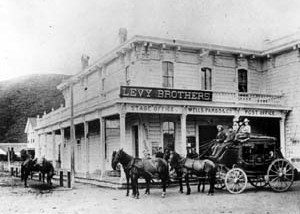 Of the men who headed west to strike it rich during the California Gold Rush, and other gold finds in history, relatively few ever found real success in the ventures. Many ended up becoming farmers or heading back east, but a few chose a different path. It always seems that when some people feel like they were gypped in something, they look for a way to even the score, as it were. That was how Charles Boles felt, after abandoning his family for the gold fields of California. When his dream of striking it rich didn’t materialize, he turned to a life of crime, but like most criminals, he left a clue that would eventually send him to prison for his crimes.
Of the men who headed west to strike it rich during the California Gold Rush, and other gold finds in history, relatively few ever found real success in the ventures. Many ended up becoming farmers or heading back east, but a few chose a different path. It always seems that when some people feel like they were gypped in something, they look for a way to even the score, as it were. That was how Charles Boles felt, after abandoning his family for the gold fields of California. When his dream of striking it rich didn’t materialize, he turned to a life of crime, but like most criminals, he left a clue that would eventually send him to prison for his crimes.
In the mid-1850s, much of the output of gold from California was transported by stagecoach and Wells Fargo wagons. Their routes often took them through isolated areas, when few lawmen were, making them prime locations for a robbery. And the outlaws in the area were quick to take advantage of those lonely stretches of roads. This type of robbery was so popular, in fact, that the company lost more than $415,000 in gold to outlaw robbers. In today’s market, that would have been worth over $12,000,000, making the loss a big motivator for the company to stop these robberies.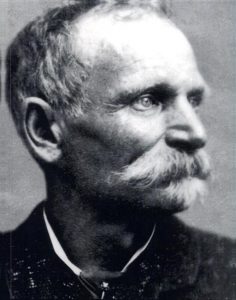
It was during this time that Charles Boles made his entry into a life of crime, using the name of Black Bart. It is believed that Black Bart’s first stagecoach robbery took place in July of 1875. He was wearing a flour sack over his head, with holes cut in it for his eyes, and a fancy gentleman’s black derby hat. I’m sure that was quite a sight to see. He intercepted a stagecoach near the California mining city of Copperopolis. Guards spotted gun barrels sticking out of nearby bushes, they handed over their strong box to Boles. He cracked open the box with an axe and escaped on foot with the gold, leaving his “gang” of camouflaged gunmen behind. When the guards returned to pick up the box, they discovered that the “rifle barrels” were just sticks tied to branches. I’m sure they were very frustrated at that point, but the deception had worked, and the money was gone.
After the success of his first robbery, Black Bart decided that he had found his niche. He proceeded to make a series of stagecoach robberies, becoming notorious. One thing to his credit was that he never shot anyone nor robbed a single stage passenger. His daring style gained him a degree of fame…that and the occasional short poems he left behind, signed by “Black Bart, the Po-8.” Wells Fargo, was not amused, however. The company set it’s private police force the to the task of capturing the bandit, dead or alive.
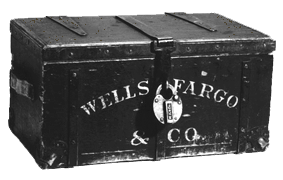 After several years of searching and tracking down clues, Wells Fargo detectives finally located Boles. On this day, November 3, 1883, the authorities almost catch Black Bart, but he managed to get away. His one mistake was that he dropped an incriminating clue that eventually sent him to prison. Black Bart was arrested and tried. He plead guilty and received a sentence of six years in San Quentin prison. He served just over four years and then was transferred to Harrisburg, Pennsylvania, after receiving a pardon. In all, Black Bart had only stolen $18,000 during the eight years of his criminal career, which in today’s market would have been $529,143.
After several years of searching and tracking down clues, Wells Fargo detectives finally located Boles. On this day, November 3, 1883, the authorities almost catch Black Bart, but he managed to get away. His one mistake was that he dropped an incriminating clue that eventually sent him to prison. Black Bart was arrested and tried. He plead guilty and received a sentence of six years in San Quentin prison. He served just over four years and then was transferred to Harrisburg, Pennsylvania, after receiving a pardon. In all, Black Bart had only stolen $18,000 during the eight years of his criminal career, which in today’s market would have been $529,143.

